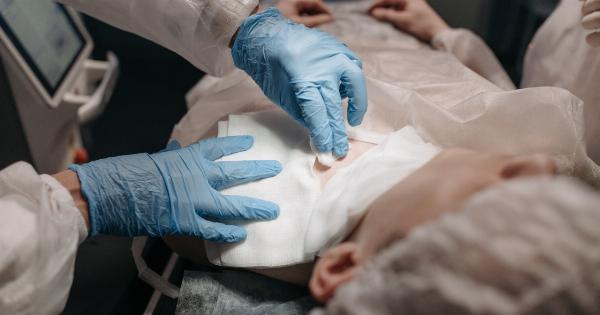Appendicitis is a common medical condition that requires immediate attention to prevent further complications. The traditional and most common method of treating appendicitis is through surgery.
It involves the removal of the infected appendix through an operation. However, in recent times, studies have emerged that advocate for non-surgical treatments for appendicitis.
What is appendicitis?
Appendicitis is a condition that occurs when your appendix becomes infected and inflamed. The appendix is a small, finger-shaped organ, located at the end of your colon on the lower right side of your abdomen.
Although the appendix is not an essential organ, its inflammation poses a significant threat to your health. Common symptoms of appendicitis include; abdominal pain, nausea, vomiting, and fever.
Appendectomy: the traditional method of treating appendicitis
Appendectomy involves the removal of the infected appendix through an operation. For years, it has been the go-to treatment for appendicitis. The procedure is relatively simple and is often done under general anesthesia.
It involves making a small incision in the lower right side of your abdomen and then removing the infected appendix.
Advancements in non-surgical treatments for appendicitis
Although appendectomy is the most common treatment for appendicitis, recent studies have shown that non-surgical treatments may also work just as well. These treatments aim to reduce inflammation and fight the bacteria causing the infection.
They include antibiotics therapy and draining of the abscess. Research has shown that these treatments can be effective, especially in cases of uncomplicated appendicitis.
Antibiotics therapy as a treatment for appendicitis
Antibiotics therapy is a non-surgical treatment that involves taking antibiotics to fight the bacterial infection in your appendix. Several studies have shown that antibiotics therapy can be effective in treating uncomplicated appendicitis.
A trial conducted by the Finnish Acute Appendicitis Study (FAAS) group in 2015 showed that seventy percent of patients treated with antibiotics did not require surgery in the first year of follow-up. Although this method has shown promising results, it may not work for all cases of appendicitis. Patients with complicated appendicitis or perforated appendicitis may still require surgery.
Draining of the abscess as a treatment for appendicitis
Draining of the abscess is another non-surgical treatment for appendicitis. An abscess is a collection of pus that forms inside the infected appendix or in the surrounding tissue.
Draining the abscess involves inserting a needle or a tube into the abscess and draining the fluid or pus. This method can help reduce inflammation and relieve symptoms. It is often used as a complementary treatment after antibiotics therapy.
Benefits of non-surgical treatments
Non-surgical treatments for appendicitis offer several benefits compared to surgery. They include;.
- Less invasive: Non-surgical treatments do not require surgery and are therefore less invasive
- Lower risk of complications: Surgery carries a higher risk of complications compared to non-surgical treatments
- Shorter hospital stay: Non-surgical treatments require a shorter hospital stay compared to surgery
- Cost-effective: Non-surgical treatments are often cheaper than surgery
The risks of non-surgical treatments
Although non-surgical treatments have shown promising results, they come with their fair share of risks. For example, antibiotics therapy can lead to the development of antibiotic-resistant bacteria.
Draining of the abscess may also result in complications such as bleeding or infection. It is crucial to consult a medical practitioner before deciding on the best treatment option.
Conclusion
The traditional method of treating appendicitis has been through surgery. However, recent studies show that non-surgical treatments such as antibiotics therapy and draining of the abscess may be just as effective.
These treatments offer several benefits such as being less invasive and cost-effective. However, it is important to consult a medical practitioner before deciding on the best treatment option.

























